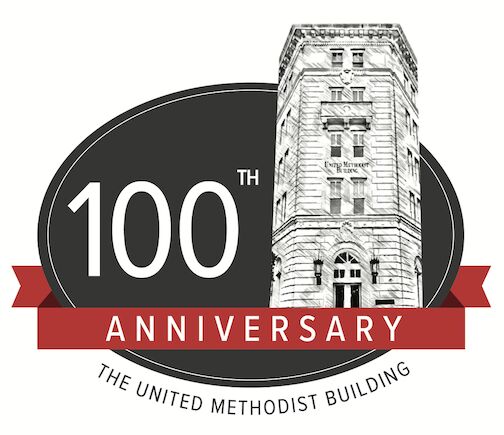ON THIS DAY... Senate Passage of the Civil Rights Act of 1964 Prompted Service at The United Methodist Building
On June 22, 1964 a service of “Prayers and Thanksgiving” was held on the front lawn of the United Methodist Building in recognition of the U.S. Senate’s passage of the bill for the Civil Rights Act of 1964.

ON THIS DAY, June 22, 1964, about 150 persons from the Inter-religious Coalition prayed and worshiped together at the United Methodist Building while also pledging to continue the work to end racial discrimination after the the historic U.S. Senate’s passage of the bill for the Civil Rights Act of 1964.
Shortly after President John F Kennedy’s assassination on November 22, 1963, President Lyndon B. Johnson addressed a joint session of Congress to advocate for the civil rights legislation that Kennedy had supported. Johnson urged Congress to honor Kennedy’s memory by passing a civil rights bill to end racial discrimination and segregation in public accommodations, public education, and federally assisted programs. In his address, Johnson declared, “we have talked long enough in this country about equal rights. We have talked for one hundred years or more. It is time now to write the next chapter, and to write it in the books of law.”
The landmark legislation arrived on February 26, 1964, at the U.S. Senate for approval after the House had passed it on February 10, 1964.
However, the process to pass the civil rights legislation was not easy and it had significant opposition. The longest continuous debate in Senate history began on March 9 for sixty days while Southern Senate Democrats refused to invoke cloture (a legislative method to end debate) for a vote on the bill.
On April 28, 1964, more than 5000 lay and clergy of Protestants, Catholics, and Jews convened at Georgetown University in Washington, D.C, for an Inter-religious Convocation on Civil Rights, calling the rally a “witness to social justice.” Seminarians across the three different faith traditions attended the Convocation and held round-the- clock support vigils at the Lincoln Memorial. Rotating representatives from the Inter-religious Coalition conducted daily vigils at the Lutheran Church of the Reformation on Capitol Hill, while other Inter-religious Coalition groups of faith leaders advocated on Capitol Hill for the bill.
Protestants, Catholics, Jewish civil leaders, both men and women, young and old representing all racial backgrounds and walks of life were among the civil society that spoke out in support of passage while the bill hung in the balance in the Senate.
At the time, a two-thirds vote, or sixty-seven senators, was required to invoke cloture and cut off debate in the Senate. Since southern Democrats opposed the legislation, votes from a substantial number of senators in the Republican minority would be needed to end the filibuster.
On June 10, a coalition of 27 Republicans and 44 Democrats voted for cloture effectively ending the debate. On June 22, 1964, the Senate passed the most sweeping civil rights legislation in the nation’s history.
The House followed by accepting the Senate version on July 2. President Johnson signed the bill into law that same day in a nationally televised broadcast, and was joined by civil rights leader The Rev. Dr. Martin Luther King, Jr., who had been instrumental in leading the public mobilization efforts in favor of civil rights legislation. The Civil Rights Act of 1964 remains one of the most significant legislative achievements in American history.

United Methodist Building Anniversary Resources
To watch four new United Methodist Building video shorts “Celebrating 100 Years of Social Witness,” and for information on the year of celebration click here.

To purchase the 2024 United Methodist Building historical book written by Dr. Jessica M. Smith, For Justice and Enduring Peace: One Hundred Years of Social Witness, visit Cokesbury Publishing.
ON THIS DAY SERIES… Each month in 2024, Church and Society will highlight notable days offering glimpses into the momentous 100-year history of the United Methodist Building and the people called Methodists often walking along side ecumenical partners living their faith through social witness.